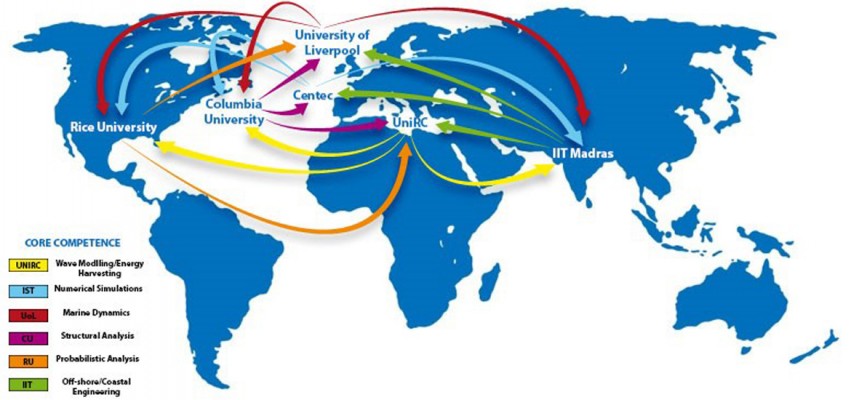The development of the technology for the construction of multipurpose off-shore platforms, consisting in artificial islands, is currently pursued in many engineering fields. The interest arises primarily from the growing need of spaces to fit human needs. At present, one of the most prominent applications of this kind of solution has is in floating airports. In this context, a distinguished example of this structure is the Mega-Float, built in Japan, in the Tokyo bay (near Yokosuka) in 1998-99 by the Technological Research Association of Mega-Float, a consortium of 17 companies. The opportunities offered by the Very Large Floating Structures (VLFS) (or artificial islands) are also known in other contexts: for instance, containers for oil or gases storage are a well-established industrial application of VLFS. However, markedly different uses may be considered, from the waste cycle, up to floating towns.
In general, this topic is part of the more general “ocean colonization”, with settlements for human needs in the ocean, with fixed or floating structures.
Advanced research on offshore structures has been historically supported by oil companies (e.g., for off-shore industry and VLFS); however, despite several research groups have investigated various aspects pertaining to the physics and design of large platforms and, also, have proposed interesting pilot applications, a multi-purpose platform focusing on the installation of devices for exploiting green energy is a novelty that can strengthen the European Excellence in the field of renewable energies.
The joint exchange program will enable to establish and reinforce collaborations among partners with common and complementary interest in the most strategic aspects of the proposal. In particular:
- A multidisciplinary approach will be pursued for investigating floating platforms devoted, mainly, to renewable energy harvesting in open seas, from the conceptual development to the experimental validation.
- New tools will be developed for processing data set, starting from big datasets that will be available at the host Universities (e.g., for advanced elaborations of long-term analysis and so on).
- Innovative stochastic dynamics methodologies devoted to the analysis of offshore systems (wavelets based statistical linearization, Wiener path integrals, stochastic averaging) will be utilized and validated, with Monte Carlo simulation, field or experimental data.
To achieve its objectives, the project will be focused on the following three general strategic goals (S.G.):
- advanced models for random waves in open seas with stochastic approaches, for design of large structures in open seas; this part of project will be developed to define the wave climate and the extreme events on large structures (a space time analysis is required, as well as new wave data in open sea must be considered), as well as to define the advanced wave mechanics on wave-structure interaction;
- innovative and efficient techniques for performing dynamical analyses of the large floating structures; for reaching the objectives some advanced techniques will be applied (e.g., statistical linearization, Wavelets based statistical linearization, Wiener path integrals (WPI), Monte Carlo simulations);
- physical modelling analysis for large floating or fixed structures, by considering both traditional facilities (wave tank and channel data) and a field laboratory for small scale field experiment.
To reach the ambitious goals of the project, we have conceived our partnership with the aim of having a multidisciplinary group, involving partners with excellences in random vibration analysis for offshore structures, in ocean and maritime engineering, and in naval architecture. In particular the project team is composed by:
- Mediterranea University (UNIRC), bringing expertise in ocean/marine engineering (focusing on wave modeling related aspects and wave energy harvesting)
- University of Liverpool (UoL), bringing expertise in uncertainty quantification, numerical simulations and random vibration in structural dynamics
- Instituto Superior Tecnico (IST), bringing expertise in Marine Environment, Marine Dynamics and Hydrodynamics, Marine Structures and Safety, Reliability and Maintainability
- Rice University (RU), with a worldwide excellent expertise on the dynamics and vibrations of structural and mechanical systems
- Columbia University (CU), with a worldwide excellent expertise in probabilistic methods in civil engineering and engineering mechanics
- Indian Institute of Technology Madras (IITM), which is a well known centre for excellence in Offshore and Coastal engineering
Finally, workshops, meetings and seminars are scheduled during the project, to assess the progress of the research activity and facilitate the dissemination, knowledge transfer and cross-fertilisation between the involved research centers.


